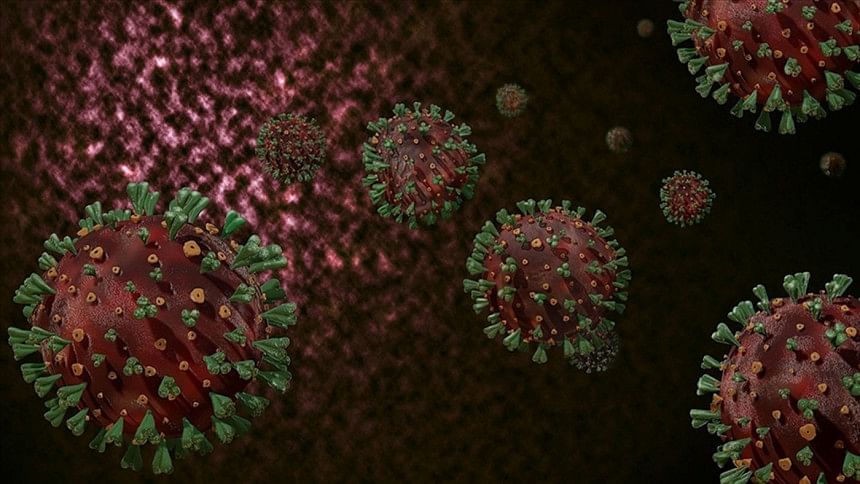Experts Views: Should we be worried about India variant?

India is witnessing a devastating second wave of the Covid-19 pandemic.
Hospitals are overwhelmed with patients amidst a nationwide shortage of oxygen supply -- the primary element of Covid-19 treatment. While the country's healthcare system is crumbling, helpless patients are gasping for air and dying with their lungs filled with the new killer variant of the coronavirus.
The magnitude of the current wave, which has yet to reach its peak, dwarfed the first wave that was considered horrifying since the pandemic began.
The daily cases in India began to rise at the end of February this year after a steady fall from mid-September 2020. It suddenly spiked sharply in March and reached record highs this month, setting the global record of daily infections with over 3.4 lakhs cases and staggering 2,761 deaths only on April 24.
Now the question is, what was the switch that catalysed the dramatic surge in infection? Was it the crowded election rallies that ran through February and March, followed by voting throughout April? Or was it due to public gatherings? Or is it the emergence of new variants?
Is Indian variant in play?
Viruses naturally mutate to produce different strains or variants of themselves. Most of these mutations are harmless. But others can make it more contagious, virulent, immune evader and often vaccine resistant.
India has recently detected such a variant -- officially known as B.1.617 -- in October. This variant is popularly known as a "double mutant" due to its two significant mutations on its Spike protein.
The variant was detected in 220 out of 361 Covid-19 samples collected between January and March in Maharashtra.
According to the GISAID database, it has been spotted in at least 21 countries. In the UK, 103 cases with the Indian variant have been detected, which were carried in by international travellers since February.
Public Health England has listed it as a "variant under investigation". Many Indian scientists believe that this variant is behind the unprecedented surge in infections that is sweeping through the entire country.
India variant has two key mutations on its Spike protein: one is L452R and other is E484Q. The L452R mutation has been found in the California variant previously.
A study published in the journal "Cell" in April 20 2021 showed that the presence of L452R mutation increases viral shedding from infected persons and increases its infection capability compared to the original version, meaning that this mutant becomes more contagious. This variant also exhibits decreased antibody neutralisation, suggesting a potential chance of vaccine resistance.
The second mutation -- E484Q – in the India variant has similarities with the one present in the South Africa and Brazil variants (E484K).
These two mutations share the same location (484) on the Spike protein; but their amino acid alterations are dissimilar. While the South Africa and Brazil mutants' glutamic acid is replaced by lysine, in the India variant, it is replaced by glutamine. This is why these two variants are similar but not the same.
The India variant has an additional 11 other mutations as well.
Preliminary study suggests that B.1.617 variant is more contagious than the original virus as predicted by earlier laboratory investigations. But it is important to consider that in India, the UK variant (B.1.1.7), South Africa variant and Brazil variant have also been detected.
An article published in "Nature" on April 21, 2021, shows that the UK variant has become the dominant virus in the state of Punjab, whereas the Indian B.1.617 variant has become dominant in the state of Maharashtra.
Both variants are highly contagious and immune evaders. Therefore, it is plausible that the new variants are playing a pivotal role in driving the second wave.
The current situation in India appears similar to that we have seen last year in Brazil, where sudden surge of infection devastated the city of Manaus due to the spread of the highly transmissible and immune evader variant known as P.1.
During the first wave, 1 in 5 people in India were infected by the original variant of coronavirus and fifty percent of the urban population developed antibodies in their blood, suggesting that they are somewhat protected from Covid.
However, the scale of the current nationwide infection raised a question -- why has the pre-existing immunity failed to protect a large part of population from infection?
This can be explained, at least in a part, with the fact that the immune evader variant B.1.617 could underlie the surge of second wave. A further large-scale genome sequencing is needed to confirm this speculation.
Due to the potential devastating nature of the B.1.617 variant, the UK has banned entrance of travellers from India into their country.
Have election rallies fuelled the spread?
In March, at the beginning of the second wave, India's political parties started a series of election campaigns in West Bengal, Assam, Kerala and Tamil Nadu. Each rally was crowded with thousands of people with no social distancing and a minimal use of masks.
As expected, all these states witnessed a rapid surge of infections. In West Bengal, from mid-March to mid-April, the number of daily cases jumped from one thousand cases to 12 thousand per day.
Surprisingly, within this timeframe the surge in daily cases was not unique to only these four states, rather similar infection rises were noted in other parts of India as well.
For instance, in Maharashtra, Uttar Pradesh and Karnataka, a rapid surge of infection took place, although they were not holding any state polls.
Therefore, large gatherings during election rallies may not be the main reason for the skyrocketing trend of the second wave infection.
Lessons to be learnt from India's crisis:
India is not alone. We have seen similar devastating second waves in Brazil, the UK, Germany and France, which were largely attributed to the new variants.
In Bangladesh, we have found the UK and South Africa variants.
We also witnessed a violent spike in infection rates during March to mid-April, which, for now, appears to be getting under control due to a nationwide "lockdown".
But this downfall of the second wave could be a temporary event before it rises again if no effective mitigation measures are taken. To avoid a potential cataclysmic of the pandemic crisis, such as the one India is facing right now, the following measures should be considered --
(1) To stop entry of the India variant to our country, for which all access points at the border must be closed for at least two weeks. A 14-day institutional quarantine must be implemented for all incoming travellers when the ban is lifted. Similar approach should be applied for travellers from the UK, South Africa and Brazil.
(2) A large-scale variant surveillance should be conducted by genome sequencing or targeted RT-PCR. Constant monitoring of variants is paramount to trace and contain any problematic variant of concern that tends to be dominant.
(3) After easing of the nationwide strict lockdown, a long-term tier-based area-specific lockdown or mitigation measures should be in place to control transmission. People should be forced to abide by health rules.
(4) Hospital beds, ICU capacity and uninterrupted oxygen supply should be increased in every district to avoid crumbling of the healthcare system in the event of worse surge in infection rates.
(5) Vaccination efforts should be increased to cover at least 60 percent of the population by the end of 2021. Without an extensive vaccination programme, the Covid-19 pandemic cannot be overcome.

 For all latest news, follow The Daily Star's Google News channel.
For all latest news, follow The Daily Star's Google News channel. 



Comments